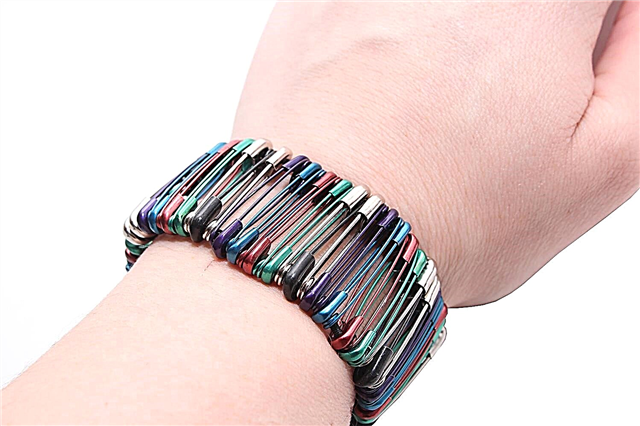Share
Pin
Tweet
Send
Share
Send
Lightweight, comfortable, trendy and for every taste! If your summer arsenal still does not have them, then they certainly need to ... sew with your own hands!
Introducing models with a pattern from the magazine "Sewing is easy and fast" 01/2014.

ETHNICA, model 7 A
Variegated espadrilles for every day are trimmed with metallic leather braid.

ROMANCE, model 7 V
Denim and white lace ... These espadrilles are perfect for a light summer dress.

POP ART, model 7 C
Naive drawings - exactly what you need for the beach!

CLASSIC, model 7 D
Juicy yellow espadrilles look noble, they can be worn in the office.

GLAMOR, model 7 E
A little painstaking, but worth all the work! Espadrilles are embroidered with sequins in two colors.
Extra tip
If you want to upgrade your old espadrilles, simply tear off the fabric parts from them and use them as a pattern for new parts.
How to take measurements - read and see at the end of the article.
SO THE CREATION IS CREATED

On the contour of the sole, mark the middle of the toe and heel. To build a drawing of the toe and back of the espadrilles, use your individual measurements M1, M2 and M3 (pink lines in the drawing).
Black lines are fixed measurements (6 cm on the left, 3.5 cm on the right).
Orange lines indicate allowances for seams 1 cm wide.
Blue lines are hand-drawn fillets.
To check if the pattern fits the finished sole, measure the perimeter of the sole. Then add the length of the blue line of the toe (without allowances) to the double length of the blue line of the back (without allowances). If the resulting value differs from the perimeter of the sole by more than 1 cm to the greater or lesser side, then the blue line of the toe fillet should be made, respectively, more gentle or rounded even more.
In the sewing instructions (see below) you will find a description of the sewing of each model.
YOU WILL NEED:
Espadrilles A-D:
Rope soles (Prym); embroidery threads (Anchor No. 8); embroidery needle; threads for sewing.
Espadrilles A:
Striped cotton flap approx. 100 x 40 cm; silver leather braid approx. 45 cm wide 1 cm; finished oblique trim approx. 1.30 m wide by 12 mm.
Espadrilles B:
Denim flap approx. 60 x 40 cm; lace piece with scallops approx. 40 x 15 cm; lace braid approx. 1.30 m wide by 1.5 cm.
Espadrilles C:
A patch of cotton with a pattern of approx. 80 x 40 cm; finished oblique trim approx. 1.30 m wide by 12 mm.
Espadrilles D:
Skin flap approx. 40 x 30 cm.
Espadrilles E:
Finished Espadrilles; braid embroidered with sequins, two colors approx. 1.30 m wide, 1 cm; threads for sewing.
BEFORE OPENING
AD: Details of the paper pattern for the back and toe should be made as described above.
The middle of the backdrop is a slice of approx. 7 cm
CUT
Espadrilles A
Fold the fabric in half with the front side inwards:
Back 4x (attach the middle to the fold)
Sock 4x
Sole 2x
Espadrilles In
Fold the denim in half with the face inward:
Back 2x (attach the middle to the fold)
Sock 2x
Sole 2x
Espadrilles C:
Fold the fabric in half with the front side inwards:
Back 4x (attach the middle to the fold)
Sock 4x
Espadrilles D:
Fold the skin flap in half with the front side inwards:
Back 2x (attach the middle to the fold)
Sock 2x

SEWING
When sweeping and grinding, fold parts with the front sides. At the beginning and at the end of each seam, perform stitching.
ESPADRIES A:
1. Back to double:
Fold the two parts of the backdrop with the front sides, grind the straight upper sections to the allowance width of 1 cm (Fig. 1). Unscrew the backdrop. Iron. Chop open sections.

2. Stitch back to toe:
Pin open short sections of the back to a direct cut of one part of the toe, open longitudinal sections lie on a rounded section of the toe (Fig. 2). Place the second part of the sock over the back with the front side to the front side, chop open and cut open sections of the parts of the sock (Fig. 3). Cut the seam allowances close to the stitch. To turn out a sock, to iron. Chop open sections. Sew the second espadrilles in the same way. Paste silver leather braid on both socks, stitch the edges to the edge.

3. Stitch back with toe to fabric sole:
Pin the back with the toe to the cut of the fabric sole (to the front side) and grind it to the allowance width of 5 mm (Fig. 4). Turn the slice over with an oblique collar. To do this, fold the slanting collar along in half, iron. To put a slanting inlay on allowances of a seam of ground-in soles (Fig. 5). Place the beginning and end of the inlay on each other to a width of 1 cm. Sew the oblique inlay to the edge.

4. Sew the top of the espadrilles to the rope sole:
Pin the upper part of each espadrilles to the rope sole and sew manually with a scalloped seam (Fig. 6).
ESPADRILS IN:
5. The top of the espadrilles:
To allow ironings on straight cuts of a back and a sock to the wrong side. Stitch the edges to a width of 7 mm. Put a flap of lace on the toe, stitch along the scallops. Cut the rest of the lace fabric in the shape of a sock, stitch it in the edge. Place the short sides of the backside under the straight edge of the toe, 1 cm wide. Stitch the toe to the back along the already existing line (Fig. 7).
Stitch the back with the toe to the fabric sole, as described in A, paragraph 3. Instead of using an oblique inlay, use lace braid. Sew the top of the espadrilles to the rope sole, as described in A, paragraph 4.
ESPADRILS WITH:
Sew espadrilles as described in A, paragraphs 1 and 2. There is no leather braid.
Cut the slice of the upper part with an oblique tie. To do this, fold the slanting collar along in half, iron. Apply a slanting tape around the cut. Place the beginning and end of the inlay on each other to a width of 1 cm. Sew the oblique inlay to the edge (Fig. 5).
Next, sew the top of the espadrilles to the rope sole, as described in A, paragraph 4.
ESPADRILS D:
Sew the upper part as described in B, paragraph 5, but without a lace motif.
Next, sew the top of the espadrilles to the rope sole, as described in A, paragraph 4.

ESPADRILY E:
Sew the sequins embroidered with sequins to the socks, as described above.

And so take measurements

STEP 1 Measure the distance from the tip of the thumb to the place where the toe of the shoe should end, stick a pin (M1).

STEP 2 Measure the distance from the floor to the floor across the foot by passing a tape measure through the pin-tag (M2).

STEP 3 Measure the distance from the pin tag to it through the heel (M3).

STEP 4 Place the finished sole (Prym) on a piece of paper and circle the contours.
PHOTO: PATRICK REINHARD. STATEMENT: CHIARA BRUNETTE.
Material prepared by Elena Karpova
Share
Pin
Tweet
Send
Share
Send





